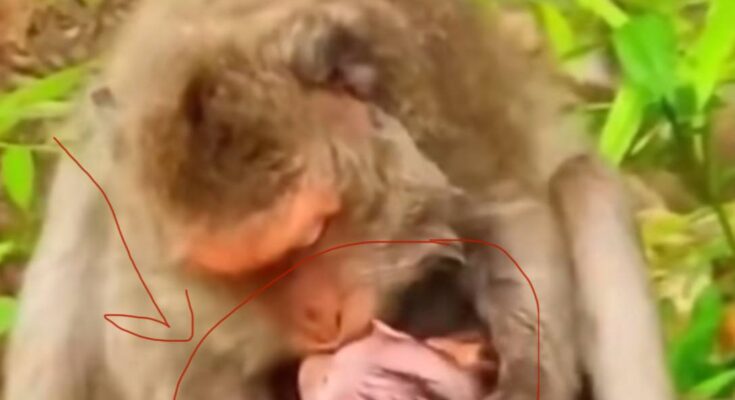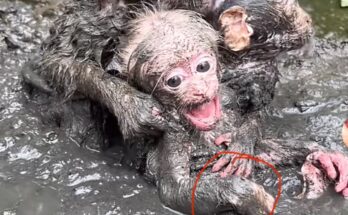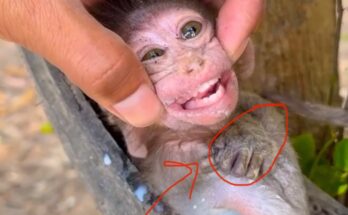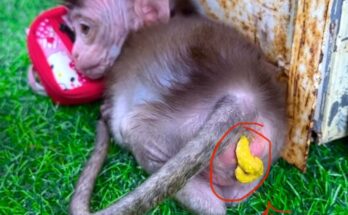In the dense canopy of tropical forests or the dusty edges of city temples, a quiet yet powerful moment often unfolds—a mother monkey trying to feed her baby. It’s a scene that might seem simple at first, but behind those tiny hands reaching out for food lies a complex world of instincts, learning, love, and survival.
When a mother monkey feeds her baby, she’s doing far more than offering nourishment. She’s teaching. She’s bonding. She’s preparing her infant for a world where food doesn’t come easy and every lesson in foraging, chewing, or choosing what to eat could mean the difference between thriving and barely surviving.
The First Lessons in Life
For the first few weeks of life, baby monkeys rely entirely on their mother’s milk. But as they grow, the transition to solid food becomes a critical milestone. The mother begins offering bits of fruit, leaves, or even insects—depending on the species. She doesn’t just give food; she models how to eat it. Baby monkeys observe intently, mimicking chewing motions or trying to grab at the same pieces.
What’s fascinating is how patient these mothers often are. A young monkey may be clumsy, dropping food or fumbling to hold it. The mother doesn’t scold. Instead, she tries again. In some species like macaques or capuchins, mothers are known to even partially chew or soften food before offering it to their young, making it easier to consume.
A Test of Trust and Temperament
This feeding moment is also a test of trust. Baby monkeys must learn not only what is safe to eat, but whom to trust when food is scarce. In multi-male, multi-female groups, other monkeys may attempt to steal food or bully infants. The mother becomes a protective shield, carefully guarding both her food and her baby’s right to eat in peace.
Interestingly, maternal temperament plays a huge role. Studies in rhesus macaques show that some mothers are more nurturing and attentive, while others are more indifferent. These early interactions shape the infant’s future confidence and behavior—much like in humans.
Not Just About Survival—About Connection
Feeding is one of the primary ways mother monkeys bond with their young. It reassures the baby, builds emotional security, and strengthens the attachment that will help it navigate the complex social structure of its troop.
In urban areas, where monkeys often interact with human environments, this bond can be tested. A mother scavenging near a market might prioritize finding food over safety, dodging vehicles or people. Yet, she always returns to her baby with whatever she finds. That persistence, that unwavering focus on her baby’s needs, is both heartbreaking and beautiful.
Final Thoughts
When a mother monkey tries to feed her baby, it’s not just a feeding moment—it’s a story of instinct, dedication, and love. It reminds us that motherhood, in all its forms across the animal kingdom, is a powerful force rooted in care and continuity. Watching these moments quietly, from a distance, gives us a rare window into the emotional world of wild animals—and perhaps, into ourselves.



